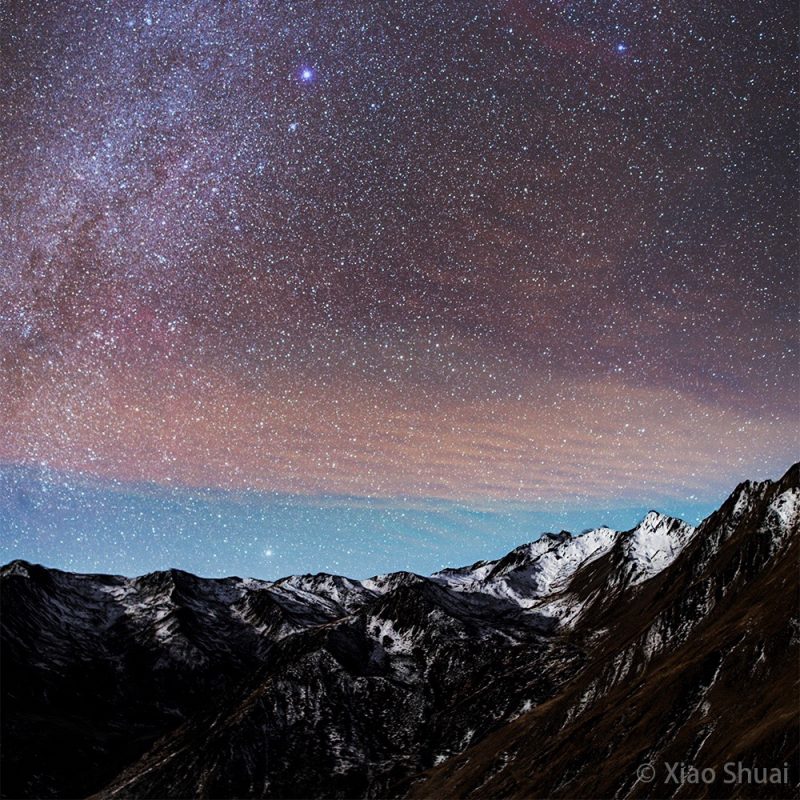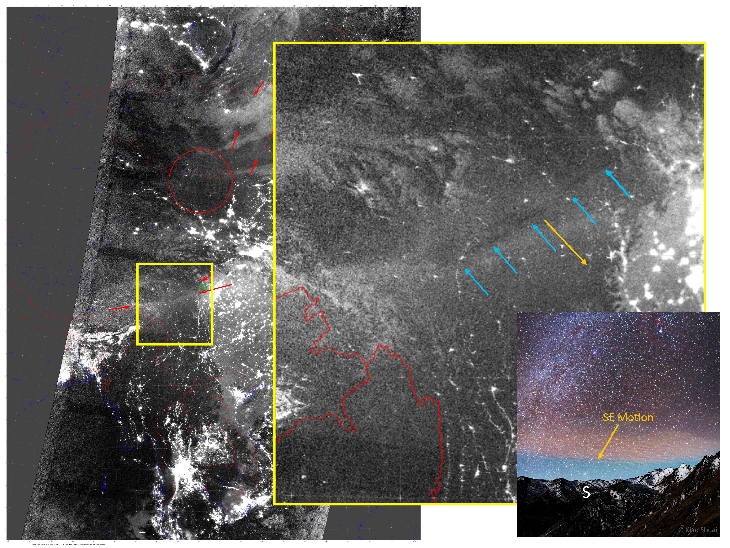
Jeff Dai, who has contributed many beautiful photos to EarthSky, wrote in late November:
A ‘mesospheric bore’ was captured from Mount Balang, Sichuan, China on November 24. The photographer reported seeing it with the unaided eye. The direction of these photos were toward the south, and the foreground mountain was illuminated by the rising moon.
Location: 30°53’54’’N and 102°54’03E.
Date and time: November 24, 2-4 a.m. (GMT +8)
Atmospheric scientist Yue Jia at Hampton University, University of Maryland College Park and NASA Goddard Space Flight Center explained:
This propagating sudden brightening or darkening of the nightglow followed by a train of waves is called ‘the mesospheric bore.’ It’s a type of undular bore [a wave disturbance in Earth’s atmosphere]. This phenomenon occurs at ~90 km [55 miles] high … Scientists speculate that this phenomenon is caused by atmospheric gravity waves trapped inside a temperature inversion layer.
He also sent a link to the classic scientific paper on the mesospheric bore phenomenon.
Need more on mesospheric bores? Atmospheric Optics has some good info, as always.

Jeff Dai asked that we add this description of gravity waves, which is from a 2015 research study on the subject:
Gravity waves (disturbances to the density structure of the atmosphere whose restoring forces are gravity and buoyancy) comprise the principal form of energy exchange between the lower and upper atmosphere. Wave breaking drives the mean upper atmospheric circulation, determining boundary conditions to stratospheric pro- cesses, which in turn influence tropospheric weather and climate patterns on various spatial and temporal scales.

Bottom line: A ‘mesospheric bore’ was captured from Mount Balang, Sichuan, China on November 24, 2016.











